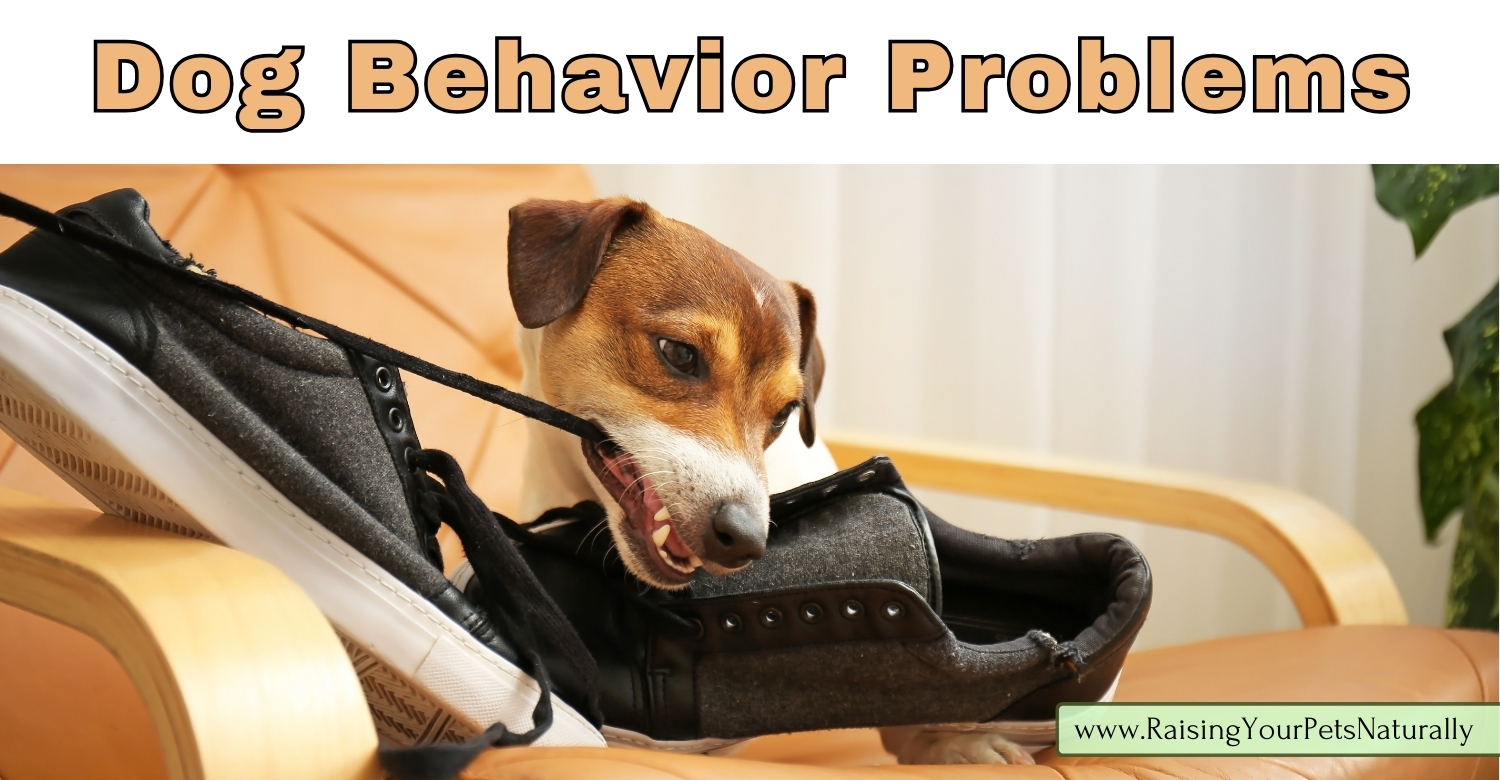Google Adsense Below


My inbox is always jammed with: “How do I stop my dog from X?” It’s common for a dog parent to ask me how to stop something, and, while it might seem like an easy question to address, the answer usually isn’t as simple as it looks.
When someone comes to me with a question on how to stop a dog from doing something, my first step is always to dig deeper. You see, changing a dog’s behavior isn’t just about stopping something, it’s about understanding WHY a dog is doing that behavior in the first place. Only then, can you truly address and change the dog’s behavior long-term. And I always shoot for long-term success vs. quick fixes that typically will manifest again in the future. Let me walk you through why this is so important and key to changing a dog’s behavior.
Why the “Why” Matters
Let’s try to think about it in simple terms. If your car all of a sudden started making strange noises and you just turned up the radio, what would happen? You might not hear the car for a while, but, more than likely, that noise means something isn’t right. And if you don’t actually address the root cause, I’m going to guess your car is going to get even worse. Your dog’s behavior is a bit like that noisy car—there’s usually something beneath the surface that needs attention.
Understanding the “why” behind a dog’s behavior is crucial for several reasons:
- Root Cause: Every behavior, whether it’s barking at the mailman, digging up the garden, or pulling on the leash, has a root cause. This could be anything from boredom to fear, anxiety, or even a lack of training. Figuring out the cause is the key to making real progress.
- Tailored Solutions: Once you know why your dog is doing something, you can create a more tailored and effective behavior modification plan. Trying to stop a behavior without addressing its cause is like putting a Band-Aid on a problem that needs stitches.
- Long-Term Results: Addressing the root cause helps ensure that the behavior doesn’t just pop up later. By tackling the issue from its source, you’re setting your dog up for success.
Subscribe to @RaisingYourPetsNaturally for more videos!
Identifying The Cause of Your Dog’s Behavior
- Observe and Note: Start by observing your dog in different situations. When does the behavior occur? Are there specific triggers? Keep a journal. Note any patterns you see, such as time of day, specific people, or environments that seem to set off the behavior.
- Ask Questions: Consider these questions: Is your dog anxious or fearful? Are they bored or lacking stimulation? Is it just a lack of training?
- Check for Medical Issues or Pain: Sometimes, underlying health problems or pain can cause behavioral changes. Has your dog had a recent vet checkup to rule out any physical issues?
- Seek Assistance: Sometimes it helps to consult with a professional who can provide insights into behavior patterns and potential underlying issues. This could be a veterinarian, or a positive dog trainer. They can help you identify the root cause and suggest appropriate steps for behavior modification. Remember, that’s what they do day in and day out. They are skilled at diagnosing and treating.
Subscribe to @CavalierTipsandFun for more videos!
Creating a Dog Behavior Modification Plan
Once you have a good grasp on the “why,” it’s time to create a dog behavior modification plan. This is an excellent reason why having a professional by your side is so helpful. They can help create the best dog training plan for you and your dog. Here are some ideas to get you started.
- Set Clear Goals: Define what you want to achieve with the canine behavior modification program. For example, if your dog is pulling on the leash, your goal might be to walk calmly on a leash without dragging you behind.
- Choose Appropriate Techniques: Use positive dog training methods to address the issue. Negative techniques or punishment can often make the problem worse and harm the relationship between you and your dog. For example, if anxiety is the root cause, focus on building your dog’s confidence and reducing their stress. To desensitize your dog, gradually expose them to the trigger at a low intensity, paired with positive reinforcement, so they learn to associate it with something pleasant. Over time, increase the intensity of the exposure slowly while continuing to reward calm behavior. This approach helps your dog become more comfortable and less reactive to the trigger.
- Consistency is Key: Stick to your behavior plan and be patient; change takes time. Make sure everyone in your household follows the same routine and uses the same techniques. If you’re not seeing improvement, you might need to tweak your approach or adjust your criteria. However, if you notice even small improvements, you’re likely on the right track. Staying consistent helps your dog learn more easily.
- Monitor Progress: Use a dog training tracker to keep a close eye on how your training is progressing. Tracking your dog’s behavior and improvements helps you see what’s working and what might need adjustment. Regularly checking your progress helps you spot trends, celebrate the small wins, and decide if any changes are needed to stay on course.
Understanding the “why” behind your dog’s behavior is crucial. By addressing the root cause, you’re not just stopping a behavior, you’re building a deeper connection and a stronger bond with your dog. Training is a journey, and knowing the “why” makes that journey more meaningful and effective.
What’s one behavior you’ve been trying to understand better with your dog? Share your experiences, and let’s discuss how we can uncover the root cause together!
Are you looking for even more ways to stay up to date with Raising Your Pets Naturally? Sign up for the newsletter for more tips and promotions. Don’t forget to be social and Like, Follow and Subscribe.
Facebook Twitter Pinterest Instagram YouTube
 |
Dog training tracker & log book |

Google Adsense—>




